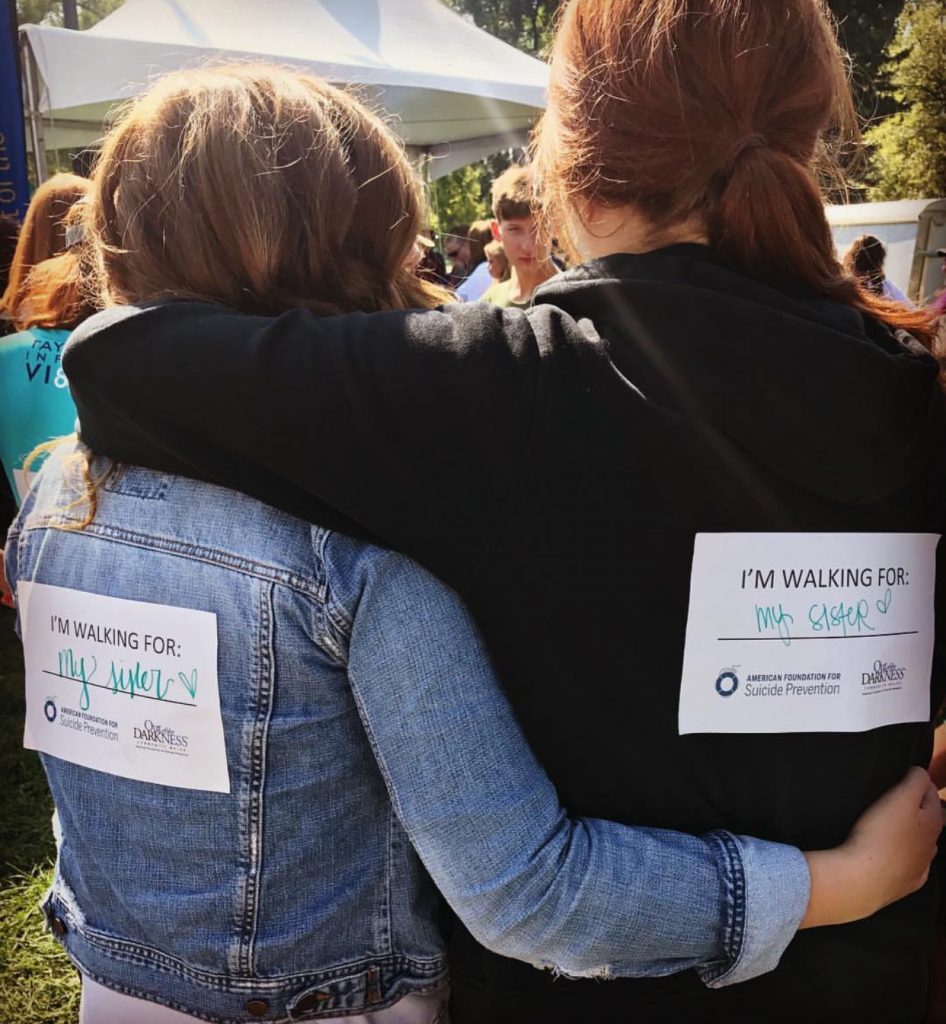
Editor’s note: this story pairs with “Tips to manage test anxiety during finals week”
BYU elementary education student Kacie Moss realized her chaotic thoughts were interfering with her day-to-day life in fall 2016. She, along with 25 percent of all college students, was diagnosed with and treated for a mental illness — Generalized Anxiety Disorder.
Seventy-five percent of all lifetime cases of mental illness begin by age 24, according to the National Alliance on Mental Illness (NAMI). BYU psychologist Klint Hobbs does not find this information surprising, considering the amount of college students dealing with mental illness is on the rise.
“Most major mental health disorders come in the late teens or early twenties,” Hobbs said. “Part of that is because your brain is still developing, but it’s also because you have to make a lot of big decisions.”
Anxiety is a sense of constant or near-constant worry that persists over time, even when stressors are not present. Everybody feels anxious at times, but when that uneasiness impairs one’s ability to function on a daily basis, the anxiety is much more problematic, according to Hobbs.
Other physical or cognitive symptoms of anxiety include fatigue, clumsiness, problems concentrating, irritability and muscle soreness. These symptoms are often seen in people living with depression, as well.
Anxiety is frequently linked to depression as the two mental illnesses often feed into each other. Moss, who writes a blog about her mental health struggles, has both.
“Depression and anxiety keeps you in your brain stem so everything becomes survival,” Moss said. “Your body is always in fight or flight. You always feel like you’re fighting, but you also feel like you’re always losing.”
According to Hobbs, anxiety coping strategies can be broken down into two categories: approach coping or avoidance coping. Approach coping consists of facing the problem and doing what it takes to fix it. Avoidance coping is the opposite — doing anything to avoid confronting the issue.
Both mechanisms can be used effectively depending on the situation. Neither one is correct in every circumstance. But when a person cannot properly identify which coping strategy will work best, the severity of their anxiety increases.
Moss uses relaxation techniques when she is dealing with severe anxiety. From practicing mindfulness, which is meditation focusing on the details of a person’s surroundings, to writing down her feelings, Moss has learned what works best for her. She created another technique, her “oops moment,” after receiving inspiration from prayer.
“I have to out loud say, ‘Oops, I’ll try again later,’” Moss said. “If I don’t do it out loud, I won’t listen to it.”
Therapy may also be part of a viable solution for those with anxiety. BYU’s Counseling and Psychological Services, located in the WSC, provides students with access to counseling sessions free of charge. Moss began seeing a therapist through the program in the spring and says the counseling employees are “angels.”
However, therapy may not be helpful for everyone. The center also has a Stress Management and Biofeedback Lab where students can use technology and computers to understand their anxiety triggers and practice relaxation techniques. This service is also free to students, who can make an appointment to visit the lab according to their schedule.
Ultimately, the coping strategies and temporary relief techniques only go so far when it comes to dealing with anxiety. They are beneficial, but do not provide a permanent solution. According to Hobbs, a person’s anxiety will improve as they gradually expose themselves to that which causes them anxiety.
“What we see in terms of really treating anxiety is that the more you avoid what makes you anxious, the more it reinforces the anxiety staying there,” Hobbs said. “A lot of proven treatment for anxiety concerns exposing yourself to what makes you anxious.”
Despite the increased acceptance within the mental health community in recent years, mental health stigma still looms large. According to NAMI, people suffering from mental illness most often experience long delays in seeking out treatment. Decades go by without acknowledgement of mental illness, despite extremely effective treatment available.
“People should not see anxiety and depression as something that’s wrong with someone,” Moss said. “It’s not a defect. Everyone has their things, and we choose the power it takes in our lives.”
The BYU CAPS program is holding a Depression Screening event in honor of National Depression Screening Day on Oct. 12. Students can go to the Garden Court in the WSC or the Cannon Center to take a mental health screen test and have the results interpreted by a professional.
“It doesn’t make sense to wait on this stuff, especially if you notice it’s impairing your ability to function every day,” Hobbs said. “That might get better on its own. But it would probably be easier if you get some help.”
The BYU Counseling and Psychological Services website provides information on things to do and not do in order to help those with anxiety.
Full-time, day-time students can contact CAPS about the various program groups offered on campus:
- General Therapy Groups
- Meditation/Anxiety Group
- Body Image and Eating Concerns Group
- Trauma Recovery and Empowerment (for women)
- Chronic Pain/Illness Group
- Couples Group
- Sexual Concerns Group
- OCD
- Group Anxiety Program (GAP)
- Premarital Workshop
- Effective Life Skills Workshop
Students can call 801-422-3035 or visit 1500 WSC for availability and to contact with a group facilitator.
Other resources:
- Mental Health America lists 10 tools to help those struggling with mental health.
- Professional anxiety support groups around Utah County focus on different topics.
- Some activities, such as mindfulness and controlled breathing can help reduce anxiety symptoms.
- The Anxiety and Depression Association of America has tips on how to manage anxiety and stress.




